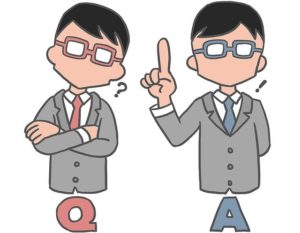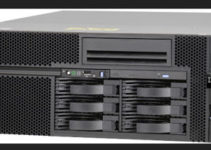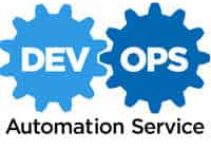Here are the most asked software engineering questions and their answers in simpler words. The list of questions included in the list is technical questions and common questions, and the answers are given in a detailed manner to help you crack your interview.
Top 25 Software Interview Questions and Answers You Must Know
Q. 1) What do you mean by SDLC?
Answer: SDLC means Software Development Life cycle. As the name suggests, it tells us how software is developed step by step. The measures include Requirements Analysis, System Analysis, Design, Coding, Testing, Maintenance, and Documentation.
Q. 2) Name a few models available in SDLC?
Answer: To carry out software development efficiently, several SDLC models are available. Waterfall model, V-Model, Agile model, are some of the SDLC models.
Q. 3) What all phases does SDLC include?
Answer: SDLC includes the following phases-
Requirement Analysis,
Design,
Development,
Testing, and
Maintenance
Q. 4) For a Software Product, what is the best SDLC model?
Answer: For a software product, there are no hard and fast rules to choose a specific SDLC model. You need to select the SDLC model depending on the type of software that needs to be built and its policies.
Q. 5) Explain the SDLC waterfall model.
Answer: The waterfall model is a model in which every phase occurs in a sequence. In this model, every stage starts when the previous step is completed. For example, the testing phase will begin after the development phase is done, and the maintenance phase begins after the testing phase is completed fully.
Q. 6) Explain the SDLC V-model.
Answer: The verification and validation model (V-model) is an addition to the waterfall-model. It implies that V-model is a sequential model, as well. In this model, each phase is associated with the corresponding testing phase.
Q. 7) What do you mean by the term baseline?
Answer: The baseline is the term used by the project manager to track the project’s progress and assess the project’s overall health.
Q. 8) What all are the duties and responsibilities of a software project manager?
Answer: The primary responsibility of the project manager is to lead the project towards successful completion. Also, he/she needs to make sure that the entire team follows a systematic approach to software development.
He/she is responsible for the following duties as well:
Planning of the project
Tracking the status of the project
Resource and risk management
Project delivery within time and budget.
Q. 9) What do you mean by Cohesion?
Answer: Cohesion means the degree to which the elements of a module are inter-related with each other. Cohesion is the internal glue that binds the details of a module. Good software will always have higher levels of Cohesion.
Q. 10) What do you mean by Coupling?
Answer: It is the degree of interdependence between the modules. Good software will always have lower levels of Coupling.
Q. 11) Explain what do you mean by modularization?
Answer: Modularization is used to divide the software into multiple modules. Every component is worked upon by an independent development and testing team.
Q. 12) What is SCM or Software configuration management?
Answer: SCM is the process of tracking and controlling the changes that occur during the SDLC. All the changes made during the software development process have to be tracked through a well-defined and controlled operation, and configuration management ensures that.
Q. 13) Give an example of Project Management tools.
Answer: Gantt Chart, Status Reports, Histograms, Checklists, and Microsoft Project are the top Project Management Tools.
Q. 14) What does CASE stand for, and what are CASE tools?
Answer: Computer-Aided Software Engineering is the full form of CASE. CASE tools are used to support and accelerate all the activities of the SDLC.
Q. 15) What do you mean by Black box testing?
Answer: Black box testing is testing an application without knowledge about the internal structure of the application or its code implementation. Testers need to know about the software’s functionality only and not the data flow and code execution in the back end.
Q. 16) What do you mean by White box testing?
Answer: White box testing involves testing the application with the knowledge of the internal structure and its code implementation. White box testing is usually performed by the developer who has written the code in unit tests.
Q. 17) What do you mean by a Feasibility Study?
Answer: A feasibility study is conducted on a software product to see if the software product’s development is beneficial and practical to the organization. In this study, the software is analyzed in-depth to understand the economic and technical aspects of a software product that is to be developed.
Q. 18 ) How can you monitor the Project execution status?
Answer: Project execution can be measured by the following techniques, i.e., Status Reports, activity monitoring, and milestone checklists.
Q. 19) What do you mean by the Functional Requirements?
Answer: They are the features that a developed software product is expected to have. For example, adding an option of payment is a functional requirement at an eCommerce website.
Q. 20) What do you mean by Non-Functional Requirements?
Answer: They measure the usability of the application. For example, it can measure the user Interface look and feel, Interoperability, performance, security, reliability, etc.
Q. 21) Give the differences between Quality Assurance and Quality Control?
Answer: Quality Assurance is to ensure that the delivered software has a minimal amount of defects possible. The testing team of the project does this process.
Quality Control is about ensuring that the delivered software product’s quality is maintained in the longer run. A support team usually does this process.
Q. 22) Give the differences between Verification and Validation?
Answer: Verification means ensuring that the product is built right. It is a static testing methodology wherein the product is being tested without executing the code.
Validation means ensuring that the right product is built from a customer’s perspective. It is a dynamic testing methodology.
Q. 23) What is Software Scope?
Answer: It is the list of features provided by the developed software. Estimations such as the project budget, time allocation, and resource allocation are done based on the software’s scope.
Q. 24) What does SRS stand for?
Answer: Software Requirement Specification is the full form of SRS.
Q. 25) In your previous projects, what SDLC model have you used?
Answer: The answer to this question depends on what SDLC model you have used previously. If you have used the Waterfall model, then the interviewer will ask questions about that. Similarly, if you have used any other model, you need to answer that.
These are the Top 25 software interview questions and answers.






